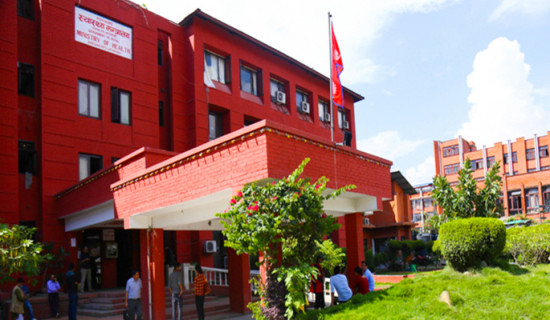- Thursday, 3 April 2025
Serving Business Interests
Despite the gradual receding of COVID-19, Nepal’s economy has been reeling from its aftershock and other hitches. The drawn-out pandemic gave a fatal blow to all the industrial and service sectors contributing to the national economy. That led to an overall economic slump, triggering joblessness, liquidity crisis in the market and high inflation. As an endeavour to cope with the burgeoning liquidity crunch, the Nepal Rastra Bank (NRB) allowed the Banks and Financial Institutions (BFIs) in February and July this year to raise interest rates on deposits as well as loans. Then, interest rates began increasing to as much as 18 per cent. It really created problems for the productive sectors, especially interest-sensitive businesses, to survive. The rise in interest rates badly affects cash flow of small businesses, hampering them from borrowing money and reinvesting it. Though this measure may have been helpful for BFIs to collect deposits, to some extent, most businesses found it quite difficult to pay back loans and sustain themselves.
They were unable to take additional loans. Thus, the higher interest rates restrained spending, investment and stock market valuations. This has caused businesses to reduce output and cut jobs considerably. Many businesses from across the nation resorted to staging street protests against the rise in interest rates as it put them at a high risk of collapsing. Taking all this into consideration, the central bank has lately reviewed its monetary policy immediately after the completion of the first quarter of the current fiscal year (2022/23). With this measure, the NRB plans to stop further rise in bank interest rates by managing the required liquidity in the banking sector. It aims to manage liquidity in such a way that the BIFs may not encounter any disruption in their payment system. Besides, targeted lending would also become smooth while there would not be any immediate increase in interest rates. The central bank has also promised to amend the working capital loan guideline to address the concerns raised by the businesses. It is now collecting suggestions from the stakeholders.
The regulatory body has maintained the existing monetary instruments such as cash reserve ratio and bank rate. It has put the compulsory cash reserve ratio at 4 per cent and the bank rate at 8.5 per cent. According to the reviewed policy, the investments made by BFIs in bonds issued by the public limited companies concerning the agriculture sector in the secondary market are going to be counted within the specified limit in order to make banks to mandatorily invest a minimum amount of loans in that sector. Meanwhile, the NRB has lessened the spread rate by 0.4 percentage points. Under the new arrangements, the average interest rate difference on loans and deposits of commercial banks has been reduced to 4.0 per cent from 4.4 per cent while the average interest rate difference of development banks and finance companies has been minimised to 4.6 per cent from 5.0 per cent.
The central bank has come up with a policy of reducing the premium rate being charged by BFIs while setting the interest rate of loans in order to stabilise it. Similarly, the central bank has made an arrangement for microfinance institutions to publish the base rate on a monthly basis from the month of Magh this year. When BFIs fail to disburse loans in the selected areas, compensations shall be calculated from the month of Poush 2080 B.S. on the basis of the month of Asar 2080 B.S. Anyway, the businesses may find the revised policy to be a panacea for the problem of high interest rate along with the lingering liquidity crisis.

-original.jpg)









-original-thumb.jpg)




